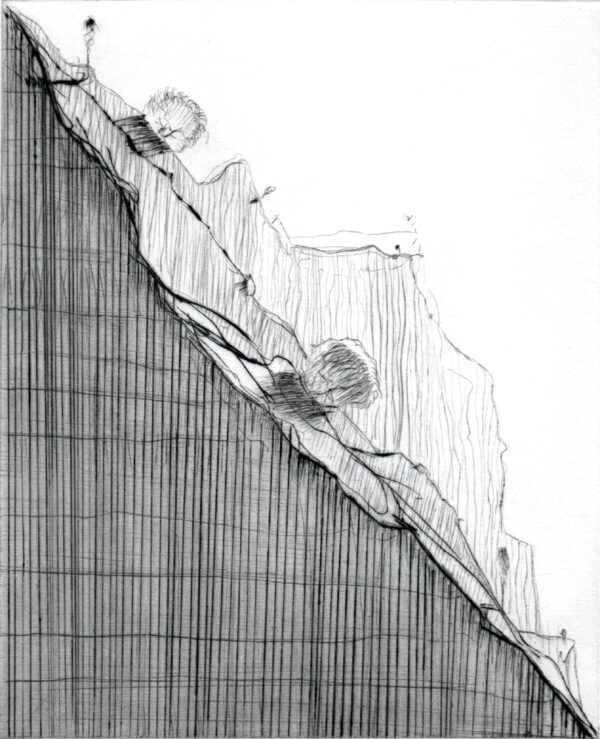Drypoint is the form of engraving that contemporary artists use the most. Drypoint lines are simply scratched into a plate with a sharp point. The scratching doesn’t remove the metal but throws it up as a burr and makes a ridge similar to the ridge of earth thrown up when a plow goes through a field.
A drypoint print like Wayne Thiebaud’s Diagonal Ridge, shown here, has lines that are irregular, with a velvet quality. In a description of a print’s media, the word “drypoint” is usually used alone, but may also be expressed as “drypoint engraving.” It should not be called “drypoint etching,” because this implies acid was used and acid is never used in making a drypoint print.

Engraving can be used as a general word meaning the plate has been incised directly, without use of acid. It can also be used specifically to mean that the plate was incised using a tool called a burin which has a v-shaped blade designed to remove burr and make a clean sharp line.
An engraved line looks wiry and has ends that taper. The engraved lines in this John Cage work, shown below, are wiry and curvy. Cage engraved over marks left when he dropped pieces of string on the plates.
